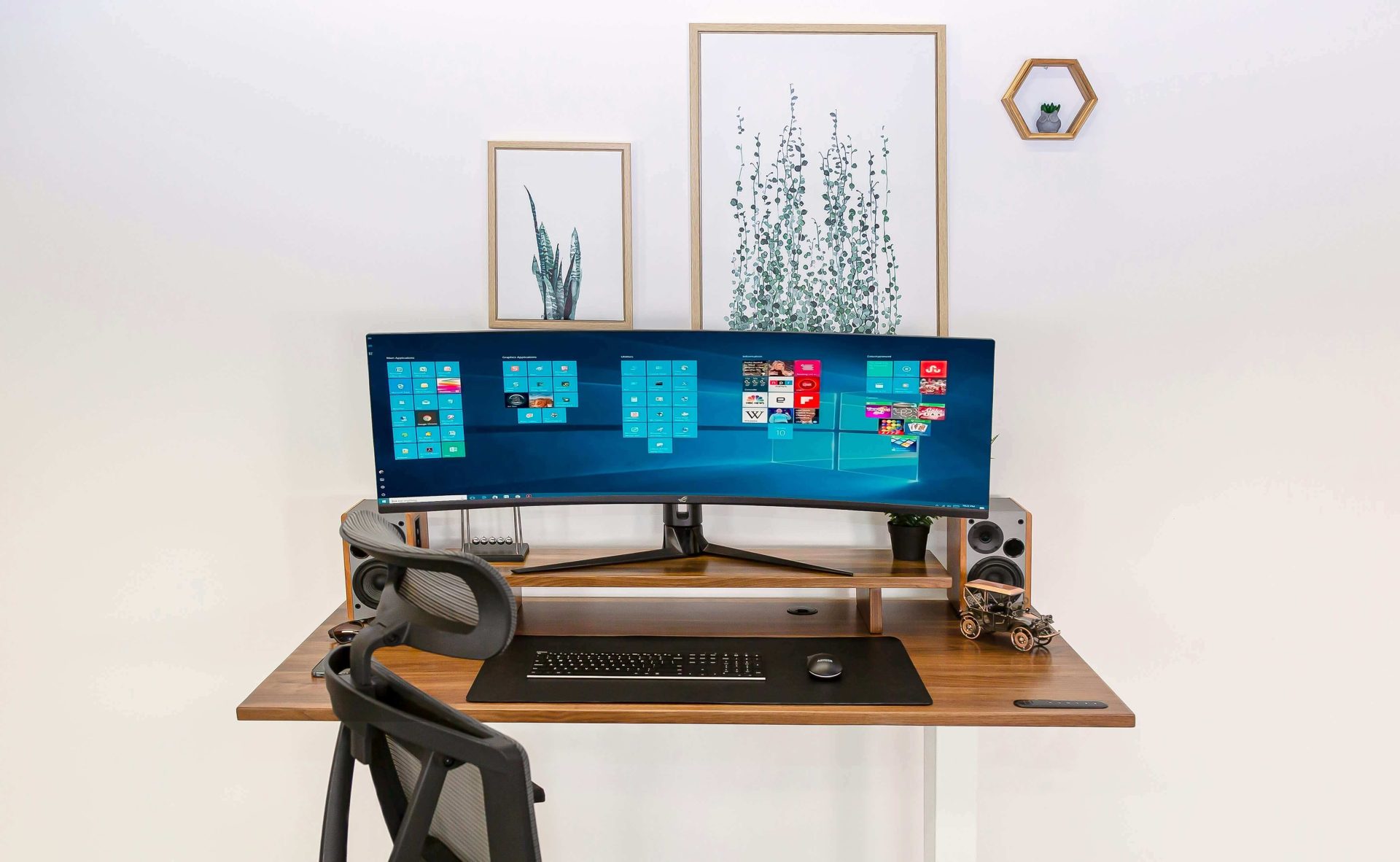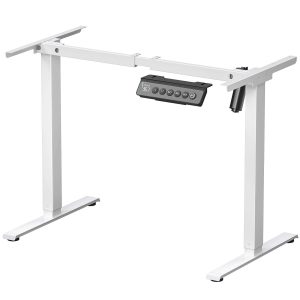Sit to stand desks have become the holy grail for modern workplaces. With their promise of flexibility, better posture, and health benefits, it’s no wonder they’re all the rage. But let’s be real: just buying one isn’t enough. It’s like buying a gym membership and never going—totally wasted potential. To really harness the magic of a sit to stand desk, you need to set it up right. The key? An ergonomic setup that makes you feel comfortable, energized, and ready to take on the day. Let’s break it down.
Why Bother with a Sit to Stand Desk?
It’s not just a trend. Sitting for hours at a time is like putting your body in time-out. You get stiff, sore, and sluggish. The result? Back pain, poor circulation, and all kinds of other aches. Switching between sitting and standing helps keep your body moving, blood flowing, and muscles engaged. You’ll feel sharper, more alert, and definitely less worn out. Studies show it’s like hitting the reset button for your body—without needing a nap.
 Step 1: Get the Sitting Position Right
Step 1: Get the Sitting Position Right
You’ve got your sit to stand desk, but is it set up for sitting? If not, don’t even think about standing yet. First, the sitting position. Your feet need to be flat on the floor—none of this “perched on your toes” nonsense. Your knees should be at a 90-degree angle, with your thighs parallel to the floor. You want your elbows to be bent at roughly 90 degrees too. Don’t let them reach up like you’re trying to signal for a cab—keep them low, relaxed, and aligned. Your wrists? They should float above your desk, naturally. No awkward wrist bends. And your monitor? The top should be level with your eyes—don’t strain your neck looking up or down. Eye level is the sweet spot.
Step 2: Transition to Standing
Alright, time to make the big leap—standing. But hold on, there’s more to it than just raising your desk. You’ve got to get your stance right. Feet flat on the floor, weight balanced. Don’t lean forward like you’re about to start sprinting. Your elbows should still stay at 90 degrees, with your forearms parallel to the floor. Standing too high? Bad news. Standing too low? Even worse. Your desk should let you maintain that neutral, no-strain posture. It’s all about balance, baby.
Your monitor? Same deal. It should be eye level when you stand, just like it was when you sat. Keep your neck neutral. Don’t look down at your screen, and definitely don’t crane your neck upward like you’re trying to catch a glimpse of a bird flying overhead.
Step 3: The Little Extras—Ergonomic Accessories
Once your sit to stand desk is dialed in for both sitting and standing, you can fine-tune the setup with accessories that’ll take comfort to the next level. If you’re sitting, get a chair that supports your lower back, with a seat that keeps your knees at that 90-degree angle. The chair should be adjustable—don’t let it lock you into a bad posture.
Your keyboard and mouse? They need to stay low enough so your wrists are straight and relaxed. No weird angles. Look into keyboard trays or separate mice for the most natural wrist alignment. And when you’re standing, get an anti-fatigue mat. Trust me. It cushions your feet, reduces the strain, and keeps you moving instead of stiffening up.
Step 4: Switch It Up—Don’t Stay in One Position Too Long
One of the best features of a sit to stand desk is its ability to let you move. But here’s the catch: standing for hours straight isn’t the answer either. It’s about balance. Start with 15-30 minutes of standing, then sit. It’s a game of give and take. The trick is to keep moving between positions. The more you switch, the less fatigued you’ll feel. Standing still for long stretches can be as bad as sitting all day. Break it up, stretch, move around, and keep your blood circulating.
Step 5: Posture Is Everything
Whether you’re sitting or standing, posture is key. No slouching. Not now. Not ever. When you’re sitting, make sure your back is supported by the chair’s backrest, your shoulders are relaxed, and your elbows are close to your body. Don’t stretch or lean forward to reach the keyboard. Keep it all in alignment. Same goes for standing: don’t lock your knees or lean forward. Keep your spine neutral, knees slightly bent, and weight evenly distributed between your feet. Little tweaks like these make all the difference.
Step 6: Stick With It
So you’ve got the perfect sit to stand desk setup. Great. But don’t let it collect dust. You’ve got to commit. Switch between sitting and standing regularly. Don’t get stuck in one position for hours. Add in some stretches, take a walk, or just move around. The more you switch it up, the less you’ll feel the strain, and the more energized you’ll be. Consistency is the key to long-term comfort and productivity.
Conclusion
A sit to stand desk isn’t just a piece of furniture. It’s an investment in your health, comfort, and productivity. But to really get the most out of it, you’ve got to set it up right. Adjust the desk for both sitting and standing, focus on keeping your posture aligned, and don’t forget the little accessories that make your setup more comfortable. The true magic of a sit to stand desk happens when you use it as it’s meant to be used—regularly and ergonomically. So set it up, switch it up, and make your workday feel as good as it looks.


 Step 1: Get the Sitting Position Right
Step 1: Get the Sitting Position Right